Creating the Yukon Striker roller-coaster at Canada’s Wonderland in Vaughan, Ont. could be likened to “a big Ikea set without the Allen wrench,” explained Bill Woods, a general foreman and superintendent for E.S. Fox, the company tasked with erecting the ride.
“There’s lots of bolts, a lot of wiring holding in the cabling and the safety mesh. There are a lot of heavy components, so all of our rigging has been substantial,” he said during a recent tour of the site. “A lot of pieces come in flat and we’ve got to rig them in such a way and make them in a state they can be erected. There are a lot of chain falls, a lot of rigging, a lot of twisting with the loops so that’s unique.”
The Yukon Striker roller-coaster is part of the biggest capital investment since the park opened and, once complete, it will transform the park’s skyline and set a number of world records including the longest, tallest and fastest dive coaster.
It features 3,625 feet of track as well as a “hold and dive” element where riders will be hanging over a 90-degree, 245-foot drop for three seconds before plummeting from zero to 130 kilometres per hour straight down into an underwater tunnel. The coaster then soars up over the steel track, through four inversions including a complete 360-degree loop, which is unique for a dive coaster.
“It’s the first coaster in the park that has an underground tunnel and the first one that has a 90-degree drop,” explained Peter Switzer, director of construction and maintenance at Canada’s Wonderland. “You will get up to 130 kilometres an hour passing through quite a tight little tunnel. It will give you the illusion that it’s too tight to fit through but it’s plenty big enough. It’s been designed to be safe but also designed to excite you.”
Creating a coaster in an already bustling and well-established theme park does come with its share of challenges, Woods added.
“It’s like building a ship in a bottle here,” he noted. “There is a lot going on in a tight spot and I think that’s our biggest challenge. It’s a great site to work on, it’s everyone’s bucket list job.”
Currently, all the structural components are being fastened to the foundations with the steel being used to build the coaster coming from Ohio.
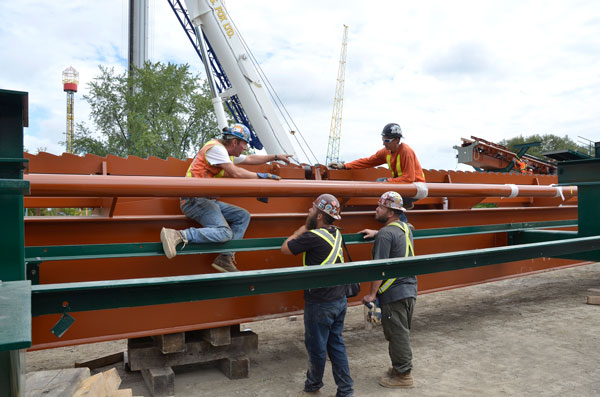
1/3
EDWARD BAYLEY — Due to the constrained nature of the Yukon Striker site in the amusement park, most of the work needs to be done during the winter months which means having to deal with unpredictable weather conditions such as the ice storm last April. Measures have been taken to ensure the safety of the public visiting the park during construction.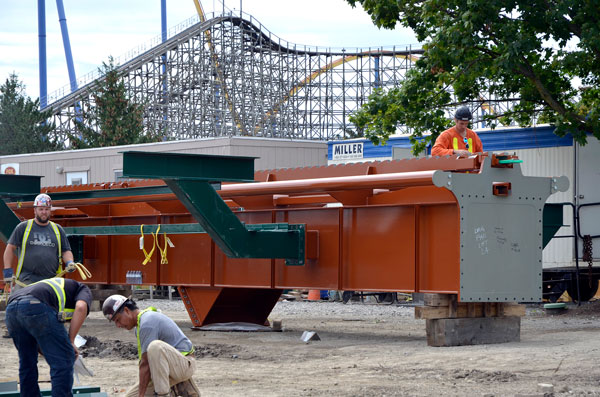
2/3
EDWARD BAYLEY — Once complete, the roller-coaster will feature 3,625 feet of track, a 90-degree, 245-foot drop into an underwater tunnel travelling 130 kilometres per hour. It will also include four inversions including a complete 360-degree loop, which is unique for a dive coaster.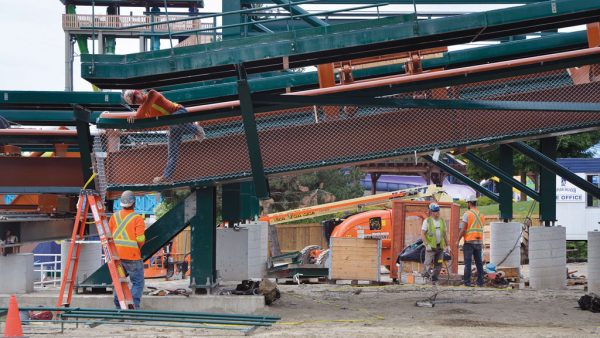
3/3
EDWARD BAYLEY — The steel structure for the Yukon Striker, the newest dive coaster at Canada’s Wonderland, is beginning to take shape. Construction started in January 2018 and the ride is anticipated to open in April 2019. Once complete, the coaster will transform the skyline of the amusement park and set a number of records for the longest, tallest and fastest dive coaster in the world.
The launch of Yukon Striker will also coincide with the opening of Frontier Canada, a new themed attraction area at Wonderland which includes rides based on the Klondike Gold Rush era of the late 1890s.
The ride was designed by Bolliger & Mabillard. Secant Engineers, a local structural engineer, was enlisted to design the tunnel and all the foundations.
“We went through various iterations of the design to get to the final version,” said Switzer. “We were involved in the concepts of the coaster and then we handed those concepts and those must-haves to the consulting engineers in Switzerland. We were looking for overall length of the coaster, we were looking for a loop on the coaster and we were looking for an underwater tunnel.”
The SkyRider coaster was removed from the site in 2014 to make way for the new ride. Construction of the Yukon Striker started in January of this year and is currently on time and on budget, Switzer said.
“We started construction of the foundations in January and then we also started construction of the tunnel,” said Switzer, adding the tunnel is the biggest part of the project and it’s 90 per cent complete.
“We also built a new roadway through the site. Steel shipments started arriving in the summer and we started erection here in the first week of August. We will finish steel erection by end of December, first week of January.
“Trains will arrive sometime in January and we’ll start testing sometime in March.”
The trains are a critical component to the ride’s excitement, he added.
“This coaster has only three trains and the cars are extended out over the track, so you sit eight abreast on this coaster,” he said. “There is no floor on the train of this coaster, so your feet are dangling over the track or over nothing.”
Work will continue through the fall and winter, with completion expected for April 2019.
“We still need to construct some buildings, we’ve still got more foundations to put in, more site work to do, planting and landscaping, fencing, signage, lighting and the rest of the track has to go up,” said Switzer. “We still need to bring high voltage feeders into the site.”
In addition to the roller-coaster, a station building, a train storage building, and a merchandise and ride photo building will also be constructed on the 1.7-acre site.
“The only contracts that have been awarded so far are the civil work and the ride erection, so the building tenders will go out in the next month,” said Switzer.
While summer months are ideal for construction, operating a theme park means most of the work has to take place in the winter.
“Because we’re building in an operating theme park, the bulk of our construction has to take place in the winter and because it happens in the winter we have to deal with the environment and the weather,” added Switzer.


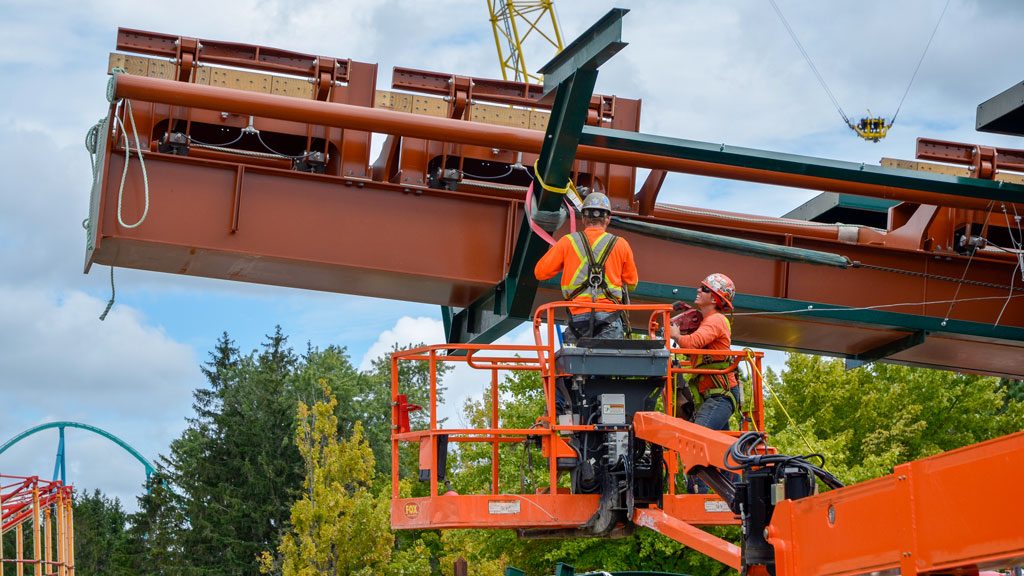

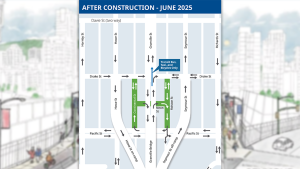






Recent Comments